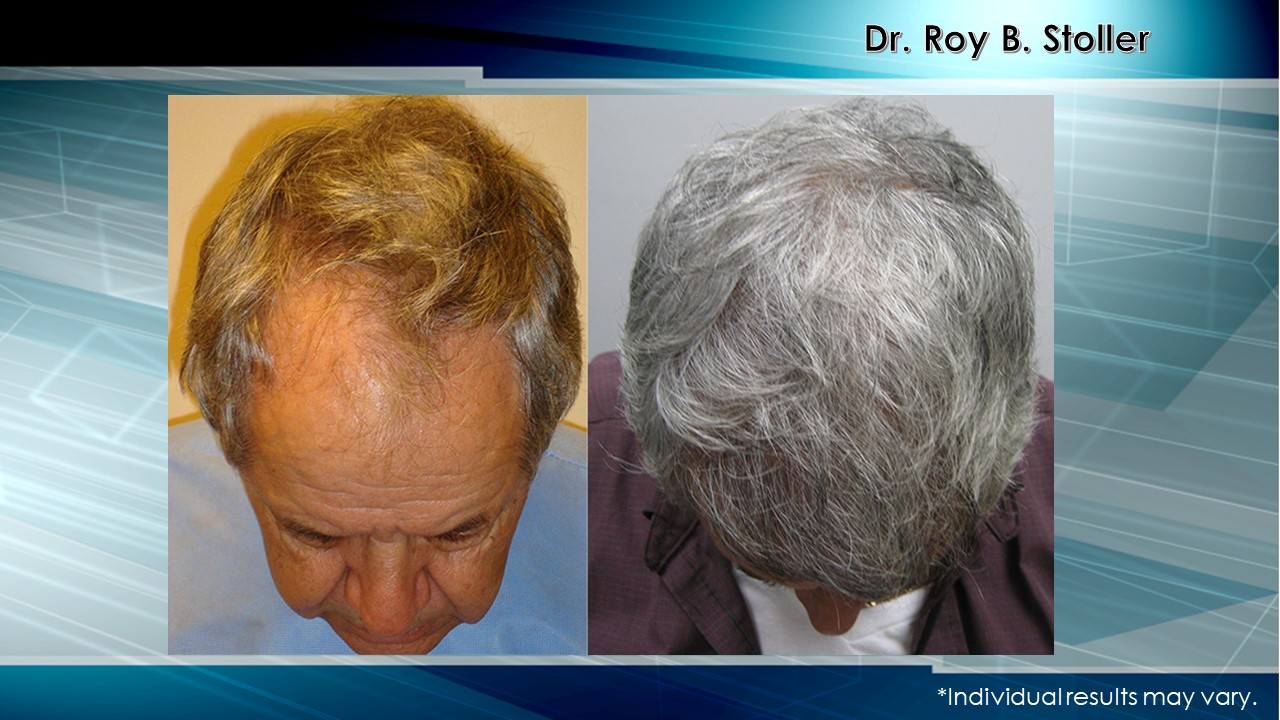

















During an FUT procedure, follicular units are extracted from a strip of donor tissue secured from the back of the head – an area that is not genetically predispositioned for baldness, thereby easily concealing a minimal scar*.
After placing the graft in a holding solution and the health is determined to be the best possible graft, Dr. Stoller begins implanting; precisely pinpointing where the new hairs will be transplanted and how to create the dense hair and shape that you are seeking.
In one sitting Dr. Stoller may extract over 2,500 units for large areas such as the crown or receding hairline.
Dr. Stoller’s expertise as a Board Certified Facial Plastic Surgeon drastically minimize the size of a scar. Within 9 months to a 1 year, it is recommend that patients have micropigmentation which can further camouflage a scar.
With 25 years of in-hospital surgical experience, Dr. Stoller utilizes the safest and most efficient anesthesia and methods for pain control both during the procedure and afterwards.
A policy of Dr. Stoller is to have a chaperone pick you up after surgery make sure to have a friend or family member come with you to assure you return home or to your hotel safely.
The last thing we want is you waiting at the drugstore after surgery. You’ll have everything you need packed and ready in our post care bag.
As part of Hair Prescription Plan – we perform you first shampoo therapy to soothe, nourish the scalp and encourage the growth of newly implanted hair. Plus, we want to monitor your hair growth to achieve maximum results.
Follow our simple recovery guide, complete with hair washing, hair care and diet tips, soon you’ll be feeling just fine*.
Hair growth normally begins 9 to 12 weeks after surgery and will then continue to grow the rest of your life like the surround donor hair..
Request a consultation with Dr. Stoller.